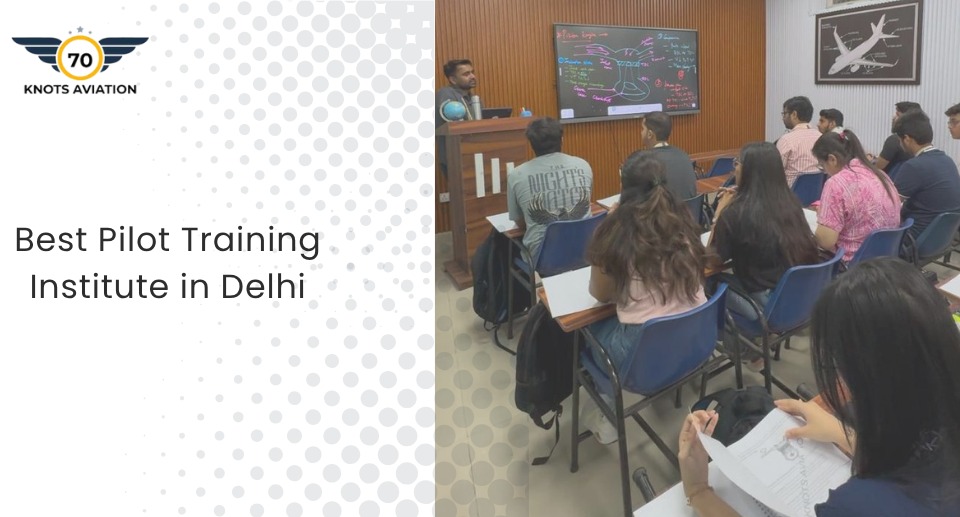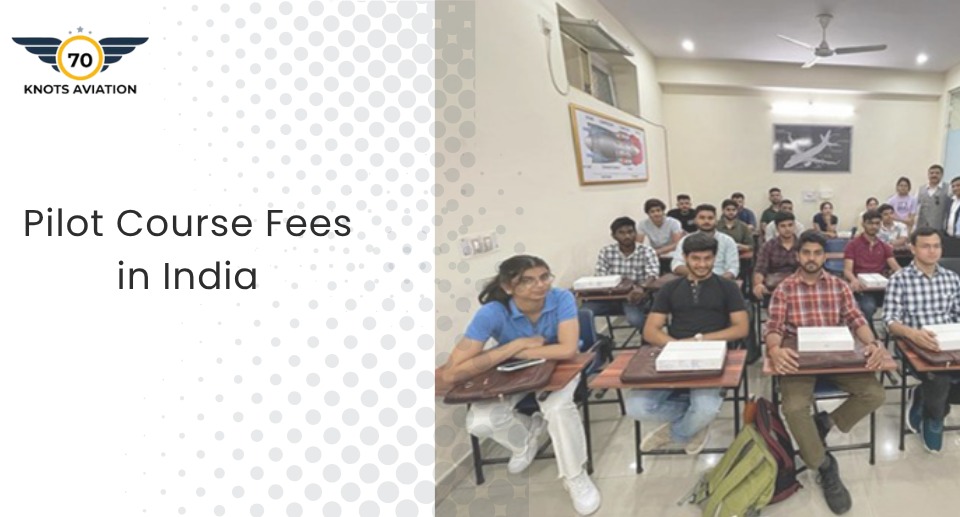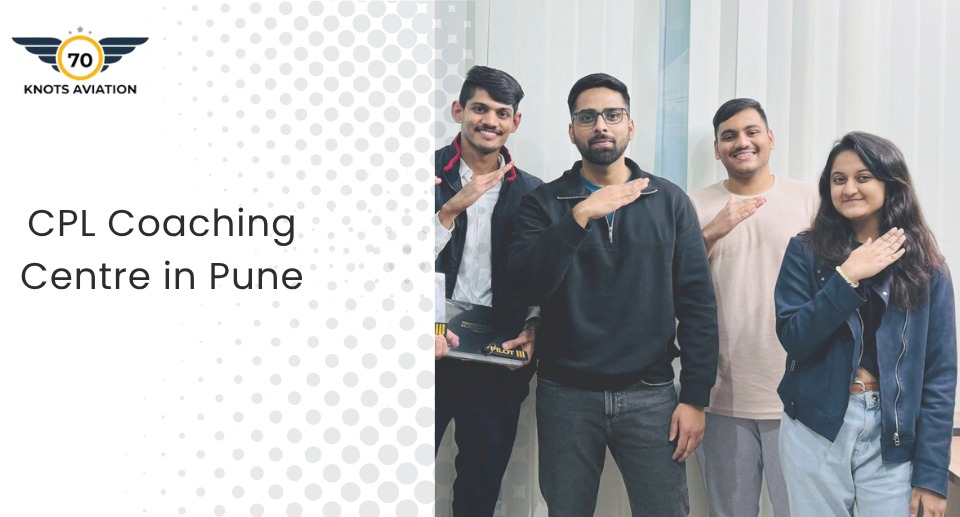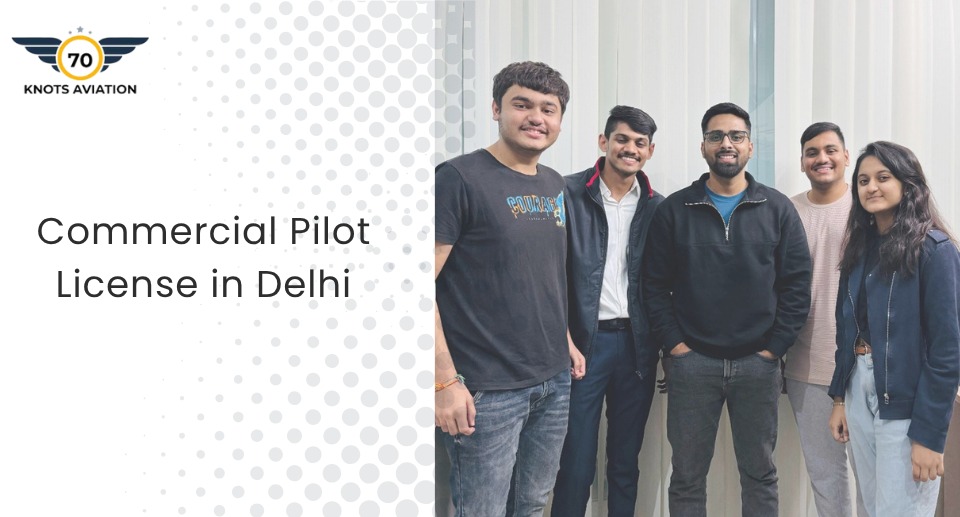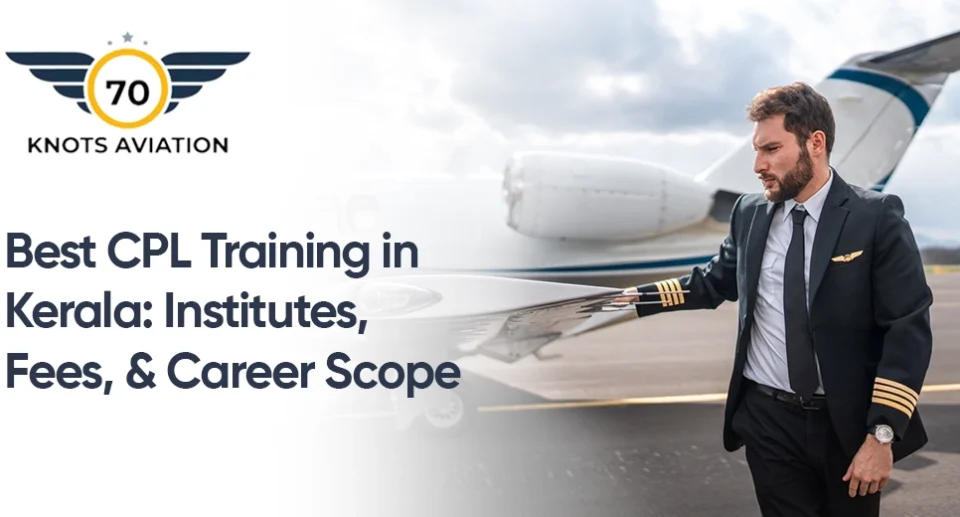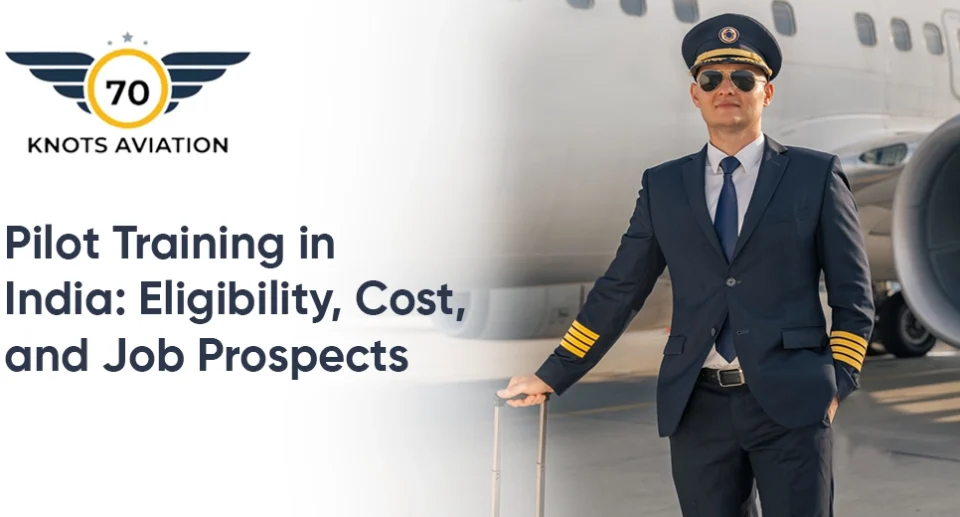Step-by-Step Guide: How to Become a Commercial Pilot in India
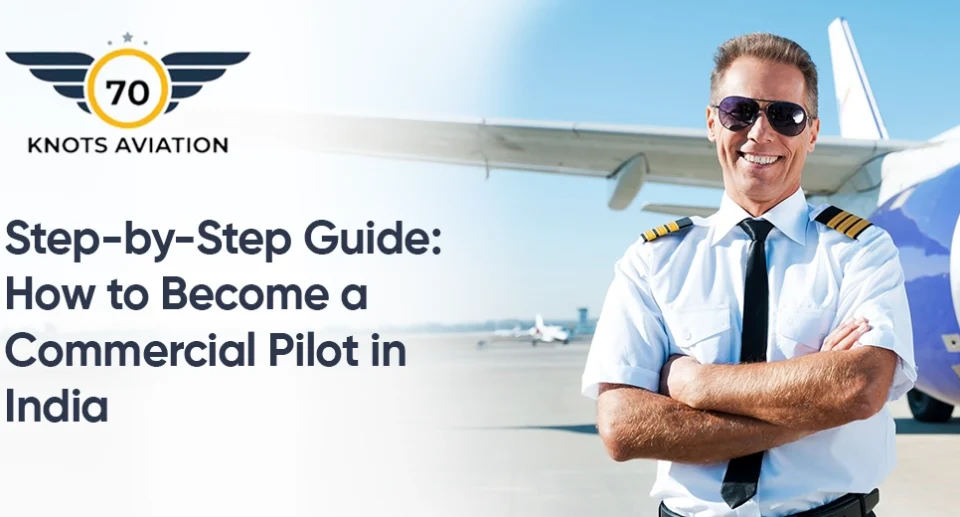
A career in aviation is a dream for many. The prospect of flying above the clouds while navigating an advanced aircraft is a beautiful aim. The aviation sector in India is rapidly expanding. This necessitates the demand for skilled pilots. If you aspire to be one, now is the perfect time for you to start this journey. Once you are serious about turning your dream into a profession, 70 Knots Aviation comes in as the top institute, so you have a solid foundation for your career. Our DGCA-approved programs are made to help aspiring pilots carry through each stage of training, from theory to cockpit, with confidence and skill.
This article explores a step-by-step process on how to become a commercial pilot in India in accordance with the DGCA guidelines.
Eligibility Criteria For Commercial Pilots In India
Before you start the journey toward your license, it is important to understand the eligibility criteria. This is defined by the Directorate General of Civil Aviation (DGCA).
Age Requirements
You need to be at least 18 years of age to apply for a Commercial Pilot License (CPL). While you can complete some aspects of your training before you are this age, like going to ground school or a Student Pilot License (SPL), you can be this age to meet the overall requirement. Starting early helps aspirants to build up knowledge and flying hours faster.
Educational Qualifications
You need to have completed the 10+2 education with Physics and Mathematics. These subjects create the foundation for understanding aviation theory and navigation, along with aircraft systems.
Medical Fitness
Flying commercially requires a high standard of physical health. The DGCA mandates two medical certifications. The first is the Class 2 Medical, which is the first examination you need to pass to begin flying training. It checks your general health, eyesight, hearing, and cardiovascular condition. Then comes the Class 1 Medical test, which is more comprehensive. It is necessary when you are applying for the CPL. DGCA-approved centers conduct this test to take ECGs, blood tests, X-rays, and other diagnostic tests.
English Language Proficiency
Since aviation communication worldwide is conducted in English, you must master this language. This means proficiency in reading, writing, and speaking. DGCA requires all CPL applicants to undergo an English Language Proficiency Assessment.
Steps To Becoming A Commercial Pilot In India
Here is a breakdown of the steps you need to take in order to earn your CPL in India:
Choose The Right Path
The first step is to choose the right step. Take an integrated CPL program that combines ground school and flying into a full-time course. This is usually completed in 18-24 months. You can alternatively choose the modular training program, which allows you to complete different phases at your own pace. This may take longer, but it offers flexibility. You must also decide whether you want to train in India or abroad. Training abroad does prove heavy on the pockets, so it is safer to stick to domestic training that is aligned with DGCA guidelines. Institutions like 70 Knots Aviation offer streamlined and cost-effective CPL training paths in India. With our team of experienced instructors, we can go a long way in your CPL journey.
Clear The Class 2 And Class 1 Medical Examinations
Book a Class 2 medical examination with a DGCA-authorized examiner. When you have cleared this, you can start with your SPL and flying training. Simultaneously, schedule your Class 1 medical examination, which is valid for a year and needs to be renewed over time.
Enroll In A DGCA-approved Flying School
Only DGCA-approved flying schools can legally train pilots in India. Look for flying academies that have a well-maintained fleet and simulators. They should also have qualified instructors with commercial flying experience. Good safety records and a transparent fee structure are also important factors. We at 70 Knots Aviation offer structured CPL programs that are tailored for the Indian airspace. Our courses provide real-time weather and ATC interaction, along with terrain familiarity. These are all needed for your long-term career in the aviation industry.
Obtain A Student Pilot License (SPL)
An SPL is needed before you can begin solo flights. You need to be at least 16 to achieve one and clear a basic written/ oral exam. You also need to be a holder of a valid Class 2 medical certificate. The SPL is your first step into the cockpit. It helps you log in initial hours under instructor supervision.
Attend Flight Training And Ground School
DGCA requires you to log at least 200 flying hours. This includes 150 hours of solo flight and 20 hours of cross-country navigation, along with 10 hours of instrument flying (simulated or real) and 5 hours of night flying. At the same time, you need to go to ground school to prepare for your theoretical exams. These subjects include air navigation and aviation meteorology. These also include air regulations and technical general & technical specific. Ground training helps you understand how aircraft systems and meteorological patterns work. You also get hold of navigation procedures and the legal framework of aviation.
Appear For DGCA Exams And RTR (A)
When you have logged your required flying hours and completed ground school, you need to clear your DGCA exams and RTR (A). The DGCA theory exam includes five main papers. These are air regulation, navigation, meteorology, aircraft technical knowledge, and radio aids. RTR (A) is the Radio Telephony Restricted (Aeronautical) exam conducted by WPC. It evaluates your ability to operate aircraft communication systems. It includes a written test and an interview.
Apply For A Commercial Pilot License (CPL)
Once you have passed the exams and meet every flying/ academic requirement, you can apply for the CPL. Now you can submit your documents to DGCA. These include the certified logbook and ground & flying training completion certificates. You also need to submit your RTR (A) pass certificate and Class 1 medical certificate. DGCA reviews your application. Upon approval, your CPL is issued. This is your ticket to a commercial aviation career.
Conclusion
Becoming a commercial pilot in India is a structured yet challenging process. It demands commitment and discipline from you. By following the DGCA-mandated process and getting into the right school, you can set out on the path to a successful career. 70 Knots Aviation is here to help you get into a high-flying profession with world-class infrastructure and a commitment to safety. With our DGCA-approved curriculum, we are raising the bar for pilot training in India.

